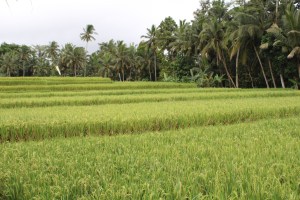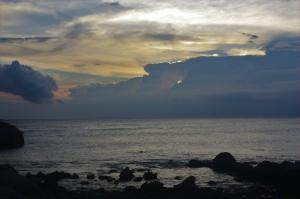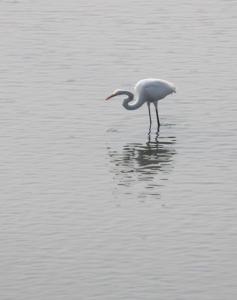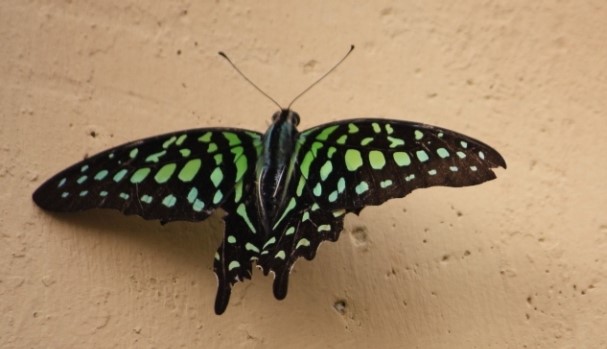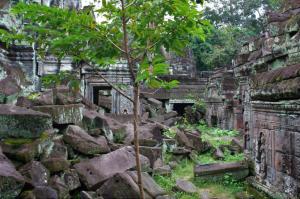Terraced rice fields. Some, in rectangular blocks. Others, following valley contours. In the tropics, all stages exist at once: The mirrored surfaces of flooded but unplanted paddies. The orderly stubble of freshly planted fields. The max saturation green fields, densely packed with verdancy. The tawny fields of heavy-headed ripe rice. One may pass all of these (and gradations, thereof) as one walks the narrow lanes that dissect farmland. People, birds, and animals transit the slender paddy levees, lending color to a monotony of vibrancy. Sometimes, a weather-beaten man or woman wades in the field -- feet wide and bent at the waist. Nowadays, people come from far away (sometimes even paying admission) to see these fields -- to see so much green packed under blue skies and to let that photosynthetic glory wash over them. mirrored paddy -- flooded but unplanted; a child studies himself lush green fields. crows on the paddy dike command the eye tawny rice. stalks bent under grain-swollen heads
The Rice Gamut [Haibun]
1

